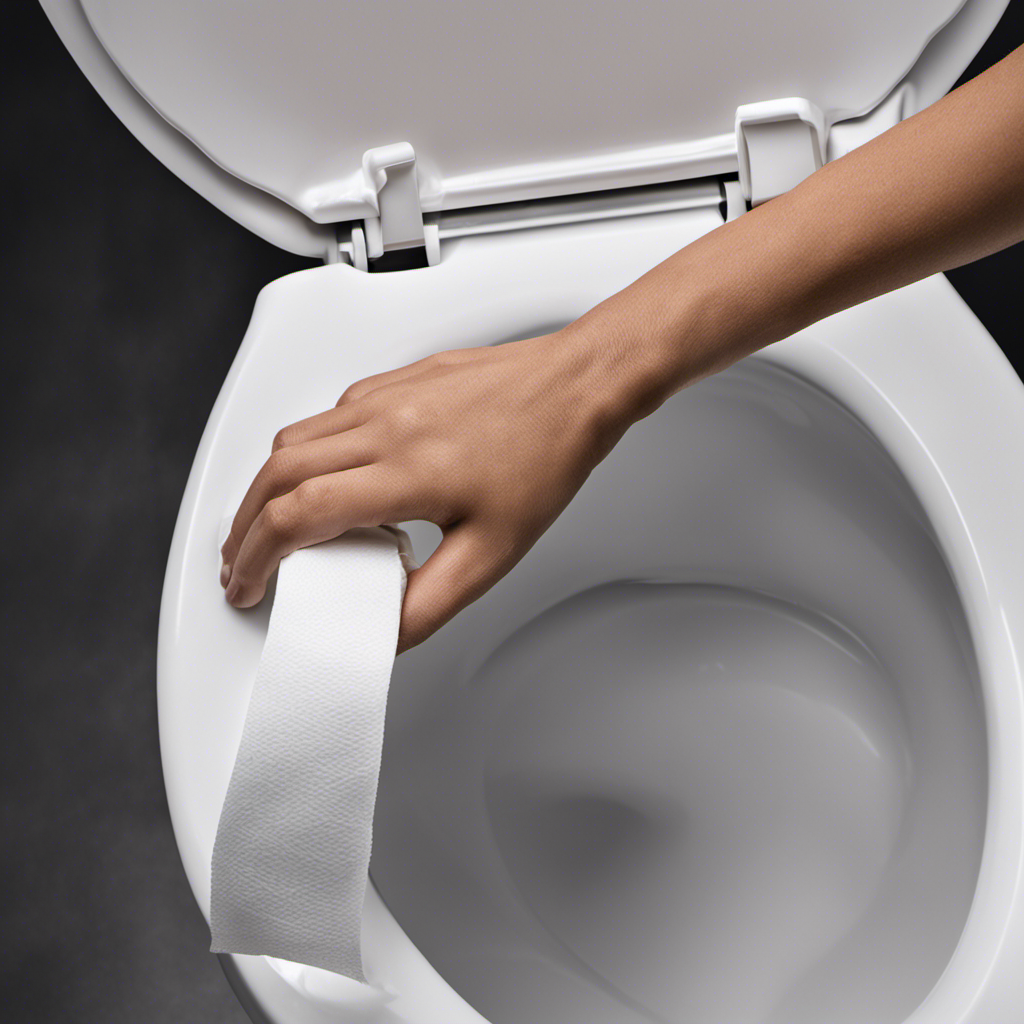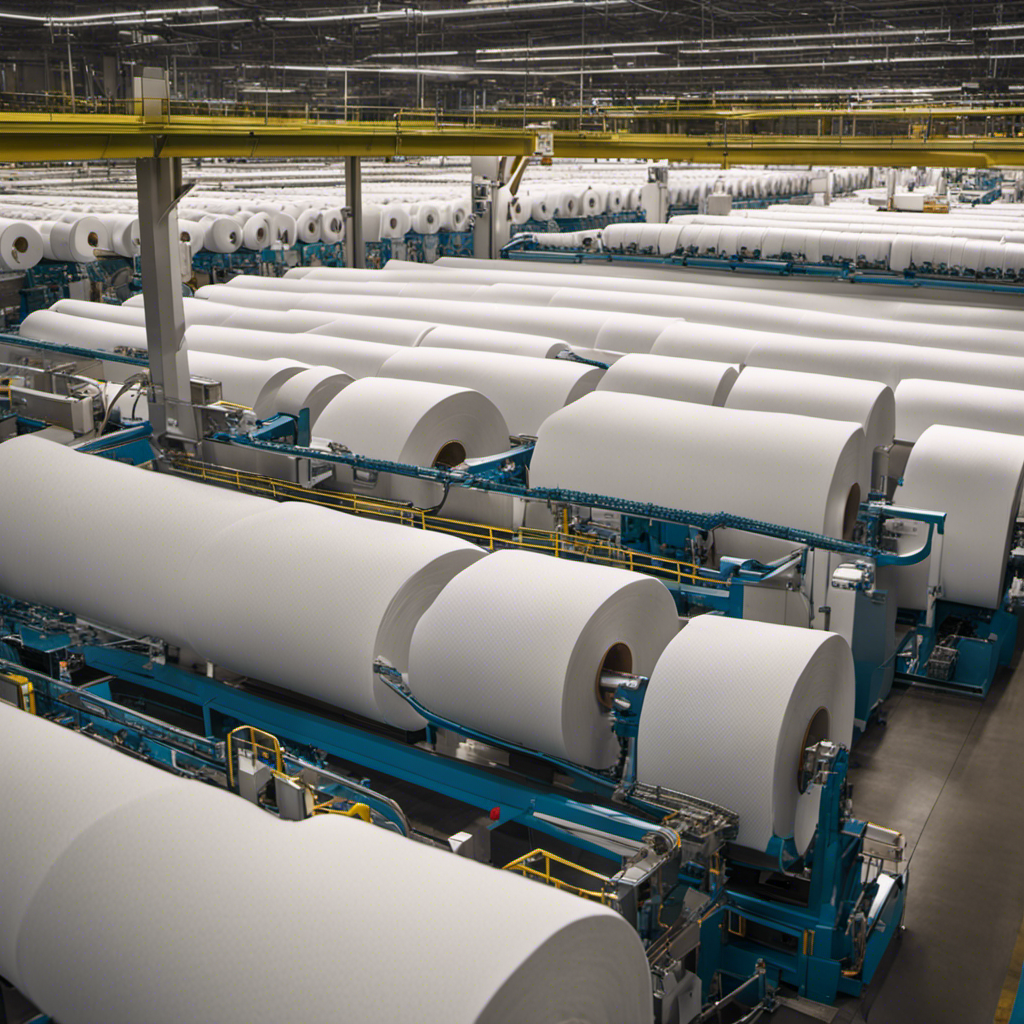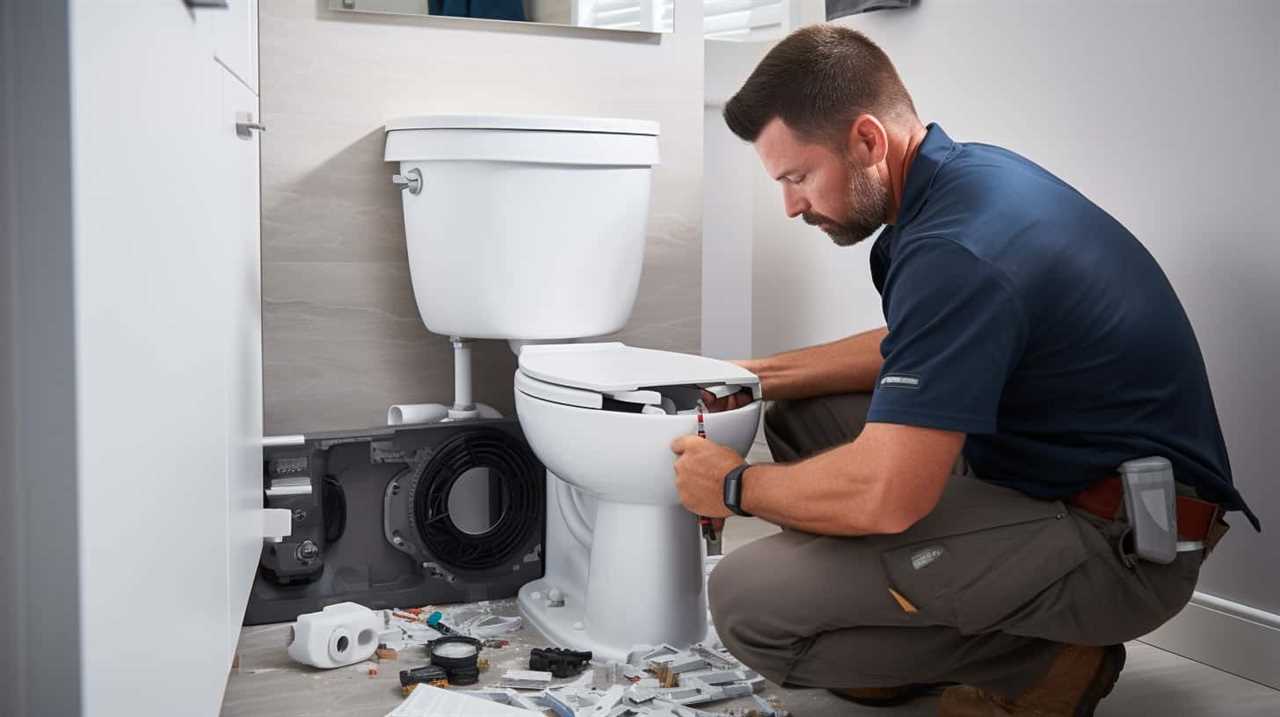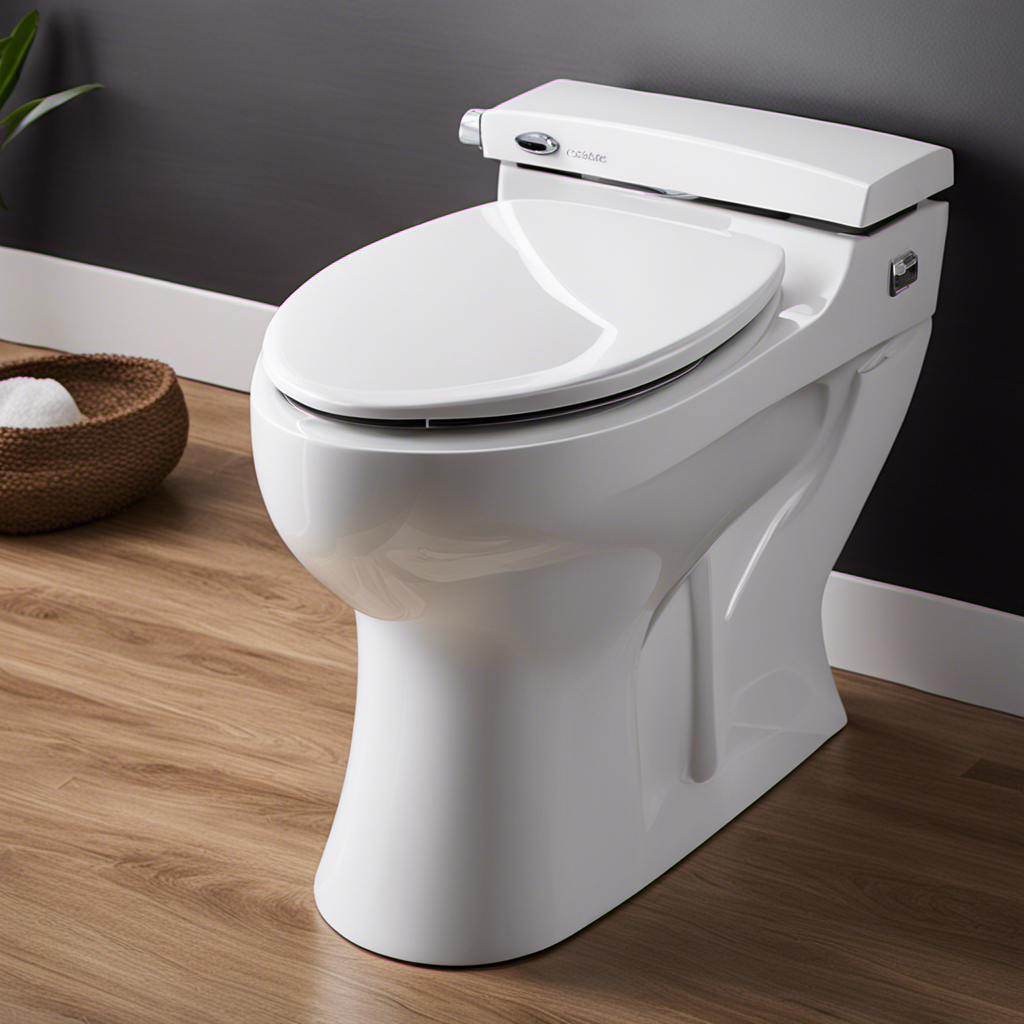Have you ever wondered why I have to flush my toilet twice? It can be frustrating and time-consuming.
Well, I have some answers for you. In this article, we will delve into the science behind toilet flushing and explore common reasons for inadequate flushing.
We will also discuss how to improve toilet flushing efficiency and troubleshoot any flush issues you may encounter.
So, get ready to discover the secrets behind a powerful, efficient flush!
Key Takeaways
- Toilet flushing mechanisms have evolved to maximize efficiency and conserve water.
- Inadequate flushing can be caused by toilet clogs, low water levels, and malfunctioning valves.
- Water pressure plays a crucial role in ensuring a successful flush.
- To improve flushing efficiency, adjust water levels, inspect and replace faulty parts, clean flush holes, and consider water-saving options.
The Science Behind Toilet Flushing
The science behind toilet flushing explains why you might have to flush twice. Toilet flushing mechanisms have evolved over the years to maximize efficiency while conserving water. With the growing emphasis on water conservation, toilets are designed to use less water per flush.
This reduction in water volume can sometimes result in insufficient flushing power, leading to the need for a second flush. The impact of water conservation on toilet flushing can be seen in the design of modern toilets, which utilize various methods to enhance flushing efficiency.
These include improved bowl shape, optimized water flow, and the use of pressure-assisted systems. While these advancements contribute to water conservation efforts, they may also require additional flushing to fully clear the bowl.
Understanding the science behind toilet flushing can help us adapt to these changes and ensure proper functioning of our toilets.
Common Reasons for Inadequate Toilet Flushing
If you’re experiencing inadequate flushing, it could be due to common reasons like a clogged pipe or a low water level.
Toilet clogs can occur when foreign objects or excessive toilet paper obstruct the drain. This restricts the flow of water and prevents proper flushing. To prevent clogs, it’s important to only flush toilet paper and waste. Regular toilet tank maintenance is also crucial for optimal flushing.
A low water level in the tank can result in weak flushing power. Check the water level in the tank and adjust the float valve if necessary. Additionally, make sure the flush valve and flapper are in good condition and functioning properly.
By addressing these common issues, you can ensure better flushing performance and avoid the need for multiple flushes.
Understanding toilet water pressure and flow is the next step in troubleshooting flushing problems.
Understanding Toilet Water Pressure and Flow
Understanding toilet water pressure and flow can help diagnose and resolve flushing issues more effectively. When it comes to toilet water conservation, it is important to consider the impact of water pressure on toilet flushing.
Water pressure plays a crucial role in ensuring a successful and efficient flush. Insufficient water pressure can result in weak or incomplete flushes, leading to the need for multiple flushes. On the other hand, excessive water pressure can cause splashing and unnecessary water wastage.
By understanding the ideal water pressure range for your toilet, you can optimize its performance while conserving water.
Now that we’ve explored the importance of water pressure, let’s move on to some tips for improving toilet flushing efficiency.
Tips for Improving Toilet Flushing Efficiency
To improve toilet flushing efficiency, you can start by adjusting the water level in the tank. By following proper toilet flushing maintenance, you can ensure a more eco-friendly toilet flush solution. Here are some tips to help you achieve this:
-
Check the water level: Make sure the water level is adjusted to the recommended mark in the tank. This will ensure the right amount of water is used for each flush.
-
Inspect the flapper valve: A worn-out flapper valve can lead to water leakage, causing the toilet to run constantly. Replace it if necessary.
-
Clean the flush holes: Mineral deposits can clog the flush holes, reducing the water flow. Clean them regularly to maintain optimal flushing performance.
-
Consider a dual flush system: Upgrading to a dual flush system allows you to choose between a full or partial flush, saving water with each use.
-
Install a water-saving toilet fill valve: These valves regulate the water flow, reducing consumption without compromising flushing power.
Troubleshooting Toilet Flush Issues
One common issue with toilets is a weak flush, which can be caused by a clog in the trapway.
If you’re experiencing toilet flush handle problems, it’s important to troubleshoot the issue to ensure proper functionality. Start by checking the toilet tank water level. If it’s too low, adjust the fill valve to increase the water level.
Another potential cause of weak flushes is a faulty or worn-out flush handle. Inspect the handle for any signs of damage or looseness. If necessary, replace the handle with a new one to ensure a strong and reliable flush.
Conclusion
In conclusion, it’s frustrating to have to flush the toilet twice. However, understanding the science behind it can help resolve the issue.
Factors like water pressure and flow can affect flushing efficiency. By troubleshooting and implementing tips to improve flushing, such as adjusting the fill valve or cleaning the rim holes, one can ensure a smoother flush every time.
Remember, knowledge is power. With a little know-how, you can make your toilet flush like a well-oiled machine.










